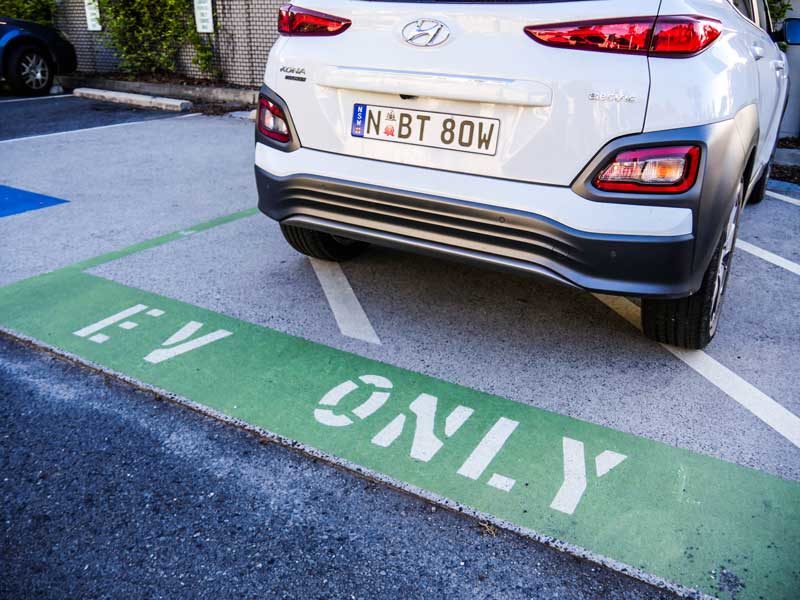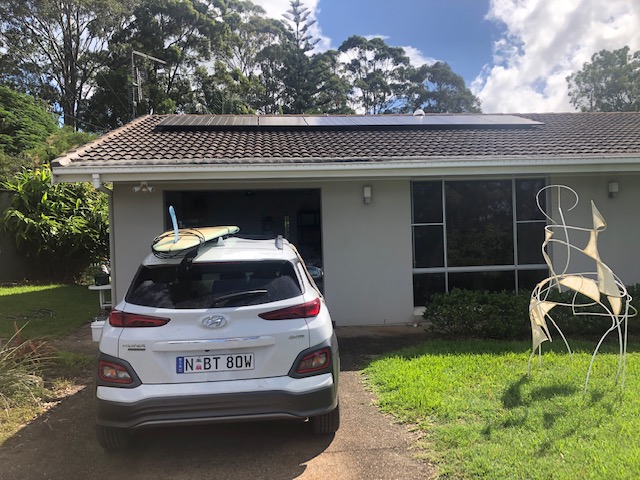“Are you sure it’s fully electric. Isn’t there an engine in there?”
I’ve just been spent the best part of a week driving the newly released electric Hyundai Kona compact SUV, and that’s not the only time someone asked that sort of question.
That’s the beauty – and frustration – of the electric version: Hyundai have made a deliberate choice not to make their electric cars look like a golf buggy, or the aspirational Tesla, or the concept cars that get exposed at motor shows.
For the past five days I’ve been driving this everywhere, and practically no one turned a head. And that’s OK, it’s the start of the new normal.
This electric compact SUV, just like the Ioniq electric sedan that was released late last year, looks pretty much the same as its petrol equivalent, bar some trimming and the lack of an open grille at the front. It’s just that it is cleaner and so much more fun to drive.
But while it’s half the price of any other EV delivered to the market with a 400km plus range, it’s also twice the (upfront price) of its petrol equivalent. And therein lies the continued challenge for the EV market.

Range:
The most exciting part about the electric Kona is its range, courtesy of its 64kWh of battery – which delivers “real world” travel of 450km. On that score alone it is a game-changer – every EV delivered to date with a similar range has been at least twice the price of this one.
Some like to pooh-pooh such claims about range and suggest it really is much lower. But I’ve been driving this for nearly a week and it looks spot on to me.
Sure, you could lower the range if you had the air-con on full blast and thrash it in “sports mode”, but even then you’d get close. When I’ve switched off the air-con, it immediately adds 20kms to the range. Turn it back from “sports” mode to “eco”, and there’s another 20km or so.
Charging:
I live in northern NSW and despite all the claims to the opposite, there’s basically no public charging infrastructure that I could use.
The Tesla folk are well served, but the charging stations for the “other EVs” at both the public library in Bryon Bay, and Macadamia Castle were both useless because their plugs are out of date. Kona and other modern EVs use CCS2 charging plugs. These and other charging stations sport only CCS1.
So in the absence of any adaptors, I was left to charge at home, plugging in to the socket in the garage. It turned out not to be a problem at all. Yes, it was slow, but I was sleeping.
 Some of the charging was done during the day, when I was working from home, after a dash down to the surf, and back to the home office, so the rooftop solar largely took care of that in a matter of hours, even on a cloudy day, and even with a slow “trickle charge” of 2.2kW.
Some of the charging was done during the day, when I was working from home, after a dash down to the surf, and back to the home office, so the rooftop solar largely took care of that in a matter of hours, even on a cloudy day, and even with a slow “trickle charge” of 2.2kW.
The home plug will charge at up to 7.2kW, but that will depend on the set-up of your home. We only have a 10amp circuit, so charging was slow, but not problematic.
And having that range is really quite satisfying.
I didn’t think twice when deciding at the last moment – without charging up the night before – to do a 100km round trip in the evening to attend a seminar. The battery was still half full when I got back from that journey and it was nearly full after over-night “trickle” charging from the normal home wall socket.
Yes, more public charging infrastructure will be needed when these become common and you are travelling from one city to the next. But for local driving, household charging will account for 90 per cent of “re-fills” – without the fumes.

Driving experience
Everyone should get to experience of driving an electric car. They may be hooked for life – clean, silent and better performance.
The Kona electric has plenty of spunk. If you are going down a freeway at a constant 110kmh, or stuck in traffic in the city, you might as well be in Eco mode. “Comfort” mode is the mid range.
“Sports” is where you get most of the car and the electric experience – smoothness and the acceleration: Unlike internal combustion engines, it barely notices hills.
 Then there is the “re-gen” – regenerative braking that both puts charge back into the battery as the car slows down, and gives the driver a real sense of control.
Then there is the “re-gen” – regenerative braking that both puts charge back into the battery as the car slows down, and gives the driver a real sense of control.
It allows for “one pedal” driving – you largely only need the brake pedal for sudden stops, and complete stops at traffic lights. It’s a new way of thinking about driving. I like the highest setting “re-gen 3”, but others may prefer the lower settings of level 1 or 2.
So, there’s a range of options – three driving modes and three “re-gen” modes to suit a variety of tastes. Most of all, there is no engine noise – a slight whir from the electric drive-train, and some road-noise from the tyres. But at low speeds, nothing at all.
Value for money?
Therein comes the “frustration” that I mentioned at the start. It is a simple fact that electric car prices still have some way to fall. The price differential between the petrol and electric implies a cost of around $500/kWh for the battery.
That will, and must, come down over time. Analysts suggest price parity between electrics and fossil fuel cars in about five years. At that point, electric cars become a no-brainer.
But they will likely become highly attractive before then. One reason is because a lot of people are really excited about electrics and so will likely pay more than they might otherwise have done – the experience of the Tesla Model 3 in the US is testimony to that.
But there are also the cost savings. I drove 600kms and used 78kWh in the time. That amounts to about $23 if I bought from the grid, and nothing if I used my own solar from the rooftop panels or battery storage (apart from the foregone revenue of exports, so let’s say $12).
If I had been driving the Kona petrol car, it would have used at least 42 litres in the country, and probably more than 54 in the city.
That’s about $75 – $85 for petrol – a saving of at least $50 a week. That’s equivalent to $12,500 over five years, and $25,000 over the average ownership time of a car in Australia, 10 years. And that does not allow for rising petrol prices.
And that’s before savings on maintenance, parts and brakes (thanks to the re-gen). The Climate Change Authority puts the cost of maintenance and repairs at twice that of electric cars.
And if you are looking for more data to justify the extra cost of the electric version, you could always add in the social cost of carbon saved – say 45 tonnes if you power it from solar or renewables, times your favourite carbon price – plus the avoided cost of all the other pollutants from petrol and diesel cars.
And then you might ask yourself, what would be the re-sale value of the petrol car or the electric car in five or 10 years time. No prizes for guessing which would be worth more, although you will have to allow for the cost of battery replacement.

Would I buy one?
Quite possibly.
A $60,000 car (the base model Kona, add another $5,000 for the “premium” Highlander version) is more than twice what I have ever spent on a vehicle so far. And that would be the same for many car owners.
As mentioned above, this is still early adopter territory. But one friend who came for a ride, and who, like me, has had a deposit on a Tesla Model 3 for the best part of three years, said it was exactly what he wanted.
“While I hope Elon receives a Nobel prize for making it safe for other vehicle manufacturers to take the EV leap, this Hyundai Kona EV is exactly what I was looking for – a long range, well-equipped, small SUV that happens to be an EV as well.”
Me? I’m inclined to wait to see if the wow factor of the Tesla 3 does deliver as flagged, and at a price that I can afford.
If it doesn’t, then this electric Kona is going to be a fine substitute. As we said for the Ioniq, it will be the new normal.
You can hear our podcast on the test drive on The Driven Podcast here.
Note: The Driven was provided use of the electric Kona courtesy of Hyundai Australia.

Giles Parkinson is founder and editor of The Driven, and also edits and founded the Renew Economy and One Step Off The Grid web sites. He has been a journalist for nearly 40 years, is a former business and deputy editor of the Australian Financial Review, and owns a Tesla Model 3.

